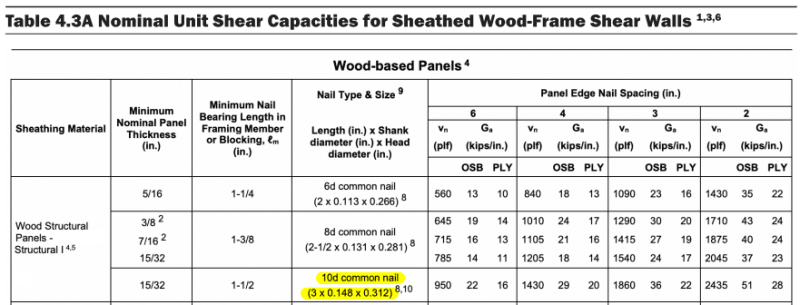Deker
Structural
- Nov 9, 2008
- 370
For those who aren't yet aware, I recently learned that the 2021 SDPWS now explicitly requires that full length common nails be used for diaphragms and shear walls. Prior editions of the SDPWS required common nails but only listed a minimum fastener penetration, which many (including myself) interpreted to mean that short nails meeting the penetration requirement were permitted. In my experience, the use of short nails on shear walls and diaphragms is ubiquitous, so this represents a significant change to standard practice. Just thought I'd share.


